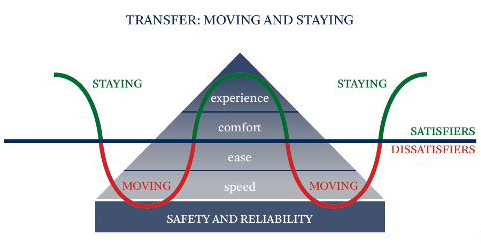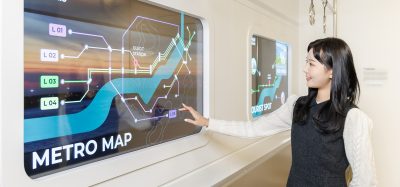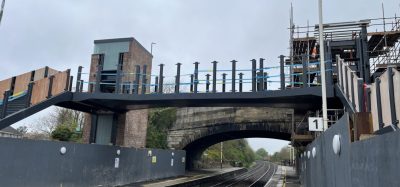The link between enhanced customer experience and increased rail travel
Posted: 22 April 2020 | KeTech Systems Limited (KeTech) | No comments yet
Modern technology offers the opportunity for train passengers to have access to customised services and up-to-date information to enhance the rail journey experience. However, findings show there is a lack of knowledge about which innovations and services are most important to rail travellers.


In order to understand this, a 2019 study1 conducted a conjoint analysis survey to understand which innovations passengers placed the most and the least value on in terms of enhancing their journey. It is well established that factors such as personal safety, comfort, reliability, convenience, and fare influence traveller’s choice to use public transport2. However, it may be argued that a fair tariff differs from each individual’s perception on value for money. UK train company services are notoriously known for a lack of punctuality, hence the tightened standards that came into place on 1 April 20193. In the rail industry specifically, passengers often do not believe they get value for money4 , however it could be argued that passengers perceived price fairness of tickets for rail travel may be distorted by other factors that they score low in the industry such as reliability, comfort and convenience.
The rail industry is often reluctant to increase prices because they are concerned that consumers might consider this as unfair and react in a price elastic way which in turn would result in financial drawbacks and negative press5. This suggests TOCs are lacking disposable capital to upgrade the technology that will better punctuality, reliability and comfort. On the other hand, it may be seen as unfair for TOCs to increase the price of tickets before upgrading products/services. This is especially true today in a ‘want now’ society, customers want instant gratification6. Customers are TOCs most crucial asset, without them there is no license to operate7, therefore it is imperative that TOCs meet user expectations. In 2017-2018, the most frequent passenger complaints were regarding punctuality/reliability, facilities on board and sufficient room for all passengers to sit/stand8. These are basic user needs, it is important that TOCs listen to customer feedback to make worthwhile investments – there is little point in having the ability to electronically validate your ticket at a seat if you (A) cannot get to your seat due to overcrowding (B) the ticket officer cannot move down the train for the same reason. In a study1, electronic ticket validating was scored low in terms of customer value. It could be argued that customers cannot see the value in technologies such as this because their basic needs are not being met.
The real question here is; Why do people choose car over rail? What does travel by car offer that rail doesn’t? Various transport scientists employ a pyramid of customer needs (see Figure 1.1), the base is formed of reliability and safety, these are seen as the customer’s most basic needs. For the customer to be satisfied trains must run on time, passengers should have access to clear and trustworthy information when they need it and customers must have a strong sense of social safety. Speed is the principal customer need and in conjunction the passenger wants the journey to be easy. Travel information must be accessible and it must be true, clear and shown in a logical manner. Passengers also expect a level of comfort on the train such as a comfortable seat and access to facilities such as toilets and refreshments. Lastly, the passenger experience can be influenced by visual aspects such as design and cleanliness7.


Figure 1.1 – Pyramid of customer needs
The pyramid of customer needs positively correlates with the results of the Oliveira et al., 2019 study1. The study concluded that UK rail passengers ranked the same three features the highest across the whole sample of people surveyed. The sample included commuters, business and leisure travellers and general travelling public. The highest ranked features were automatic compensation for late or cancelled trains, real-time journey information, especially during disruption and the ability to search for, reserve or change a seat up until the last minute. These features link to reliability, ease and comfort. For TOCs, data such as this is imperative if they are to meet passenger needs. Not only does it help to guide value inducing investment decisions but it also highlights features that passengers find little value in.
KeTech is a leading technology company in the rail industry with experienced, industry-expert designers and engineers. KeTech has proven experience in the design and delivery of real-time railway systems linked to operational signalling equipment. To date, KeTech has real-time information systems deployed with over 50 percent of UK TOCs. All these systems work reliably in the harsh EMC and challenging environmental envelopes. KeTech provide Passenger Information Systems (PIS), Customer Information Systems (CIS), Connected Driver Advisory Systems (C-DAS) and Driver Only Operated CCTV (DOO). KeTech create bespoke solutions that can help drive change in the industry should TOC’s choose to collaborate. KeTech’s PIS and CIS effectively address the issue of customers wanting clear real-time information, showed in a logical manner which can also be tailored by the TOC. KeTech’s C-DAS addresses the issue of speed and reliability whilst also being mindful of the environment and the wallet of the TOC e.g. efficient fuel usage (KeTech, 2020).
The technology that customers want is here today, delivering right results now. If TOCs wish to have a reason to exist in the future they must not only meet basic needs but offer a service that is appealing, they must deliver an experience that passengers see worthier than the experience of car use.
References:
- Oliveira et al., 2019
- Sam et al., 2018
- orr.gov.uk, 2020
- Spero, 2019
- Bieger, Engeler and Laesser, 2010
- Hartmuth, 2019
- Hagen and Bron, 2014
- DFT, 2018
Related topics
Operational Performance, Passenger Experience/Satisfaction, Passenger Information Systems (PIS)







